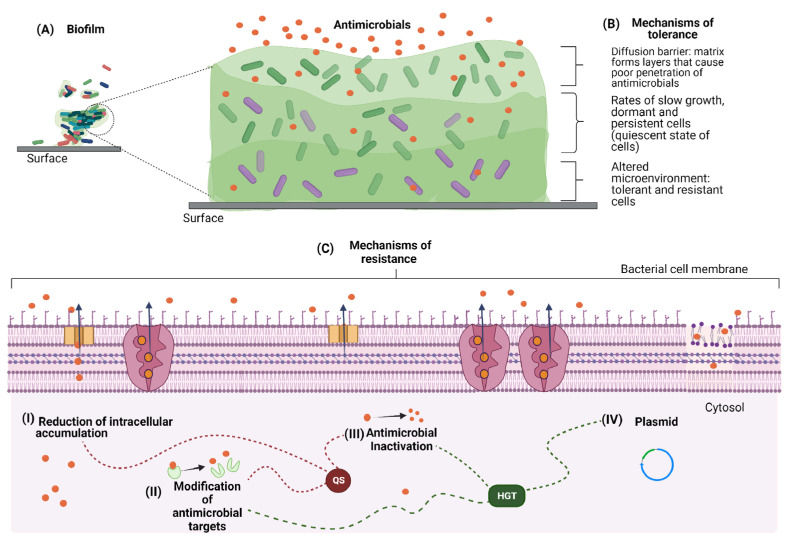Figure 2.
Mechanisms of recalcitrance. (A) Mature biofilm. (B) Mechanisms of tolerance: the extracellular matrix interferes in the permeation of the antimicrobial by the biofilm which cause microbial selection and development of resistance. These mechanisms lead to the activation of a quiescent state, a moderate increase in the expression of the efflux pump, and a decrease in membrane potential. Resistant bacterial cells (purple), sensitive bacterial cells (green). (C) Mechanisms of resistance. (I) Reduction in intracellular accumulation: bacteria reduce the antimicrobial content by decreasing membrane permeability and/or moderate increase in efflux pumps expression. (II) Modification of antimicrobial targets: the target alterations occur through changes in the structure or the number of transpeptidases involved in the construction of cell wall peptidoglycans. (III) Antibiotic degradation: resistance occurs by transferring chemical groups to the antimicrobial or by complete degradation of the antimicrobial. (IV) Plasmid: in biofilms, plasmid-mediated conjugation is considered one of the main pathways for the dissemination of antibiotic resistance (ARG) genes in HGT.

